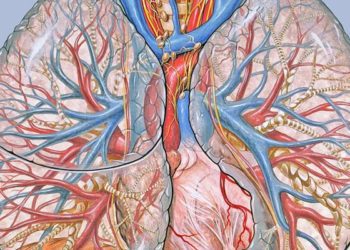Chinese population study shows high prevalence of elevated cardiovascular disease risk and low utilization of pharmacotherapy
1. In this national screening project, around 10% of middle-aged Chinese subjects were found to be at “high risk” for cardiovascular disease.
2. Aspirin and statins were only used by 0.6% and 2.4% of high-risk individuals, respectively.
Evidence Rating Level: 3 (Average)
Study Rundown: A 2015 study showed that cardiovascular disease (CVD) is now the leading cause of death in China, accounting for 40% of all deaths. This statistic is likely to rise further, given the country’s rapidly aging population and increasing rates of risk factors like diabetes, hypertension, and smoking. This study was the result of a national screening effort to understand the prevalence of CVD in Chinese adults and to identify modifiable risk factors that can be targeted in future health programs. Of the 1.7 million adults surveyed, 9.5% met criteria for being at “high risk” for cardiovascular disease. Common modifiable risk factors included hypertension, dyslipidemia, diabetes, smoking, and alcohol. However, only a small fraction of high risk adults received aspirin, statins, or antihypertensive medication. Compared to previous studies, this study covered a considerably larger cross section of the Chinese population, including patients from all 31 provinces of the country. However, it relied upon a “convenience sampling strategy,” which raises concerns for sampling bias. It is also important to note that definition of CVD risk was determined by international organizations, and has not been validated for the Chinese population
Click to read the study in Annals of Internal Medicine
Click to read the accompanying editorial in Annals of Internal Medicine
Relevant Reading: China cardiovascular diseases report 2015: a summary
In-Depth [cross-sectional study]: This study evaluated the prevalence and risk factors for CVD in a population of 1.7 million Chinese adults from across China. Patients were selected by convenience, and were omitted from analysis if they had pre-existing CVD or if their data were not complete. The authors used a risk prediction algorithm developed by the World Health Organization and the International Society for Hypertension, which take into account age, sex, smoking, systolic blood pressure, diabetes, and total cholesterol. Demographic factors associated with high CVD risk included Han ethnicity, current alcohol use, and insurance status. Having a higher education, being married, or working as a farmer were associated with decreased risk. Among patients identified as “high risk,” around 96.2% had co-morbid hypertension, 54.9% had diabetes, 29.7% smoked, and 18.1% drank alcohol. Notably, only about 43.1% of patients with hypertension and 30.6% of patients were aware of their diagnosis. When all different subpopulations were pooled, only 0.5% of high risk patients were taking statins (CI95: 0.5% to 0.6%) and only 2.4% were taking aspirin (CI95 2.3% to 2.5%). In certain subgroups, these rates were as high as 4% and 6%, respectively.
Image: PD
©2019 2 Minute Medicine, Inc. All rights reserved. No works may be reproduced without expressed written consent from 2 Minute Medicine, Inc. Inquire about licensing here. No article should be construed as medical advice and is not intended as such by the authors or by 2 Minute Medicine, Inc.







